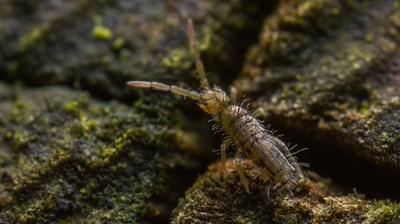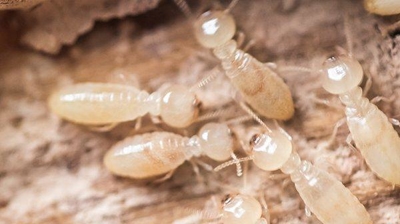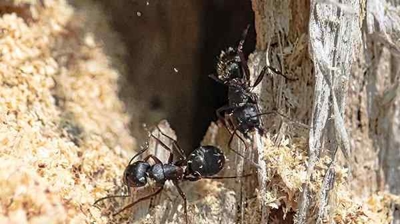
Wildlife
What Types Of Wildlife Are Most Common In Texas?
Over time many species of wild animals have learned to adapt to living in close proximity to people as their habitats and our habitats have merged together. Wild animals have discovered that people provide easy access to food, water, and shelter sources. The most common species of wild animals causing problems for homeowners in the Greater Houston area include raccoons, opossums, moles, squirrels, and bats.
Raccoons
Raccoons are nocturnal mammals that are most often identified by a dark black “mask” of fur that covers their eyes. Raccoons like to live near wooded areas and areas that are near water sources such as rivers, ponds, and lakes, but have adapted to live in any urban, suburban, or rural environment. Raccoons are about the size of a medium-sized house cat and have a stocky body. Their body is covered in dense fur that is salt and pepper in color and they have a tail that is ringed in gray and black fur.
Opossums
The opossum’s claim to fame is being the only species of marsupial found living in the entire United States; being a marsupial means that they carry their young in a pouch. Opossums have a long narrow face covered in fur that is lighter in color than the rest of their body which grows to between 15-20 inches in length. Their hunched body is covered in whitish-gray fur and is sprinkled with long guard hairs. Opossums are also easily identified by their prehensile (capable of gripping) hairless tail, hairless ears, and feet that look very similar to small hands.
Moles
Moles live almost their entire lives underground, tunneling and foraging for earthworms, grubs, and other insects to feed on. Moles have short stocky bodies, a short bare tail, and front feet that are large and rounded with strong claws for digging. Their body is covered in dense velvety fur that is a brownish-black color. Their body grows to between 6-7 inches in length. Moles have a rounded head, a pointed nose, very small eyes with no external opening, and no external ears.
Squirrels
The most common species of squirrel found living in Texas are tree squirrels and, as their name suggests, they are typically found living in areas where there are trees. The tree squirrel’s exact appearance will depend on their specific species, but tree squirrels typically are whitish gray, yellowish, red, or brown in color and their belly is usually lighter in color than the rest of their body. Tree squirrels have a distinct long bushy tail that they use for balance as they leap from tree to tree, or tree to other structure (homes, sheds, garages, barns).
Bats
Bats are a species of nocturnal mammal that is often found roosting in homes and other buildings. Their most unique feature is their leathery wings that extend from their front limbs to back limbs and tail. While their fur can vary from species to species, they are typically covered in a dense layer of black- to brown-colored fur. Depending on their specific species, bats range in length from 2 3/16th to 7 ½ inches (nose to tail) and have a wingspan of 6-15 inches. Bats have four legs (with the front two helping to form their wings), sharp teeth, and either pointed or rounded ears.
Is Wildlife Dangerous?
Yes, wild animals are considered to be dangerous for many different reasons. First, wild animals carry and transmit a variety of bacteria and diseases that can make people very ill. Animals such as raccoons and bats are potential carriers of rabies, and bat droppings have the potential to contain fungi which can cause histoplasmosis (a harmful lung disease) in people. Second, wild animals are just that, wild. They have the potential to become very aggressive and bite and scratch if they feel threatened or trapped, placing you, your kids, and pets in danger. And finally, wild animals can also cause extensive damage to the structure of homes and businesses, destroy personal belongings, contaminate food, and create unsightly damage to yards and gardens.
Where Am I Likely To Find Wildlife Animals?
Outside wild animals can be found living in a variety of places like in trees, in crevices between rocks, in the cavities of trees, in abandoned burrows of other animals, and in hollow logs. Some species of wild animals burrow under lawns or gardens, home foundations, decks, and sheds. If wild animals find their way inside to live and nest, they are typically found hiding out inside attics, chimneys, behind walls voids, and inside crawl spaces.
Does Modern Offer Wildlife Control?
At Modern Pest Control, we offer wildlife control in Greater Houston that includes solutions for raccoons, opossums, moles, squirrels, and bats. A licensed wildlife control technician will inspect your property to determine what type of wildlife is active in your structure and how they’re getting in. Based on that assessment, a trapping and exclusion plan will be developed to get rid of the wildlife and to keep it/them out of your property. Learn more about our services or simply contact us to request more information.
How Can I Prevent Wildlife Infestations?
When it comes to keeping wildlife out of your home or business, you must seal every opening that would permit their entry. Our team of pest control professionals also recommend:
- Sealing openings found in and around your roofline, replacing broken or loose roof shingles, and placing a tight-fitting cap on the chimney.
- Caulking gaps found around exterior windows and doors.
- Replacing or fixing torn screens and repairing loose siding and vent screens.
- Removing bird baths, bird feeders, and wild animal feeders from your property.
- Placing woodpiles, gardens, and compost bins away from the exterior of your home.
- Trimming overgrown trees, landscaping, and bushes away from the exterior of your home.
- Making sure that all outdoor trash cans have tight-fitting or locking lids on them.
- Picking up uneaten pet food in between feedings.
Helpful Wildlife Articles



